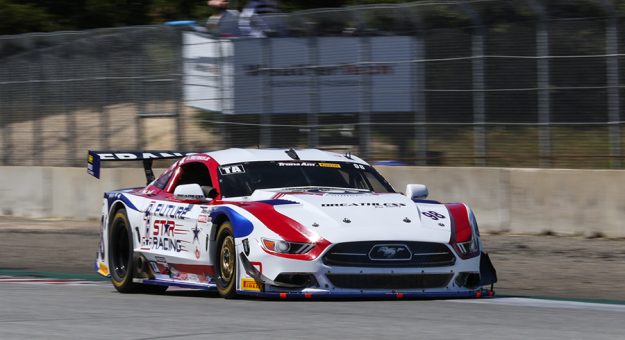HARRISBURG, N.C. — One of the toughest parts of writing for the print edition of SPEED SPORT is keeping columns and feature stories under the designated word counts.
Racing personalities are fascinating individuals and every interview produces so much interesting information that there isn’t space to print it all.
As a result, we occasionally like to go back and clean out our notebook.
– When we asked open-wheel racing legend Pancho Carter if he had any regrets, he responded, “I should have been a little more diligent on not being so concerned about a full-time Indy car ride.
“I had the chance to run for Roger (Penske) on a part-time basis. Maybe, 20/20 hindsight I should have done that, but that would be about the only thing,” Carter noted. “The opportunity was presented through Jim McGee, but not Roger himself. I was wanting a full-time ride and I was pretty much at the top of my game right then and there.
“I didn’t want to run as many sprint and midget races because the Indy cars paid so much better. I had a lot of offers that year and I guess I should have picked that one because that’s the one Rick Mears ended up taking.”
– John Clagett, president of the Trans-Am Race Co., told us Trans-Am competitors should expect a bigger tire-and-wheel combination for next season.
“Going into 2021, we literally locked our rules packages in place so the competitors wouldn’t have to do anything to move forward,” Clagett said. “Having said that, we are in active conversations with Pirelli, our tire supplier, to build an 18-inch tire for the 2022 Trans-Am season. That would put a little bit more speed in those machines and ensure they are the fastest GT cars in North America. Our current plan is to have those tires on Trans-Am machines next year.”
– Bob Miller, longtime promoter of Thunder on the Hill at Pennsylvania’s Grandview Speedway, revealed there was a point several years ago when he was ready to leave the corporate world and work full time as a race track owner and promoter.
“I looked at buying Bridgeport (N.J.) Speedway,” Miller said. “That would have been right before Paul Kuhl bought it. I had a partner, and I was going to leave Pepsi, build a house there on the property and run Bridgeport. I lost the bid by $50,000, which today doesn’t seem quite as much as back then. When that fell through, my aspirations of working in racing full time went away and I needed to focus on my career.”
– Hall of Fame sprint car competitor Joe Saldana was a bricklayer before becoming a full-time racer.
“My dad was a journeyman bricklayer, so I became a journeyman bricklayer in Nebraska. I served a four-year appren ticeship and that’s what supported my racing,” Saldana said. “When I came to USAC, I laid brick in ’73 and then I laid brick in ’76, and that was it. But I would only do it for the summer, and it was for a friend of mine here in Brownsburg. I worked for his crew.”
In addition, Saldana was a big fan of the high-banked race tracks.
“I loved the banks,” he said. “You could take a car that maybe wasn’t quite right and if you knew how to use the bank, it made you go fast. I learned that from tire testing with Gary Bettenhausen at Winchester and Salem.”
– Veteran broadcaster Mike Joy credits friend and mentor Ken Squier with having the greatest impact on his career.
“I learned a lot from Ken and it wasn’t so much that he would teach you, but he led by example and would make an occasional suggestion,” Joy said. “I learned so much about trying to convey this sport on television because it is so unlike other sports – you don’t see the athlete; you don’t see the emotion in his face as he’s competing like you do in other sports. It is very different and I learned a whole lot of that from Ken.”
